
Generic article
Replace, reduce and refine - WUR is reducing animal experiments
The research, education and collaborative programmes carried out at Wageningen University & Research (WUR) are helping to ensure a sustainable future. With a healthy and stable environment, ample healthy food, healthy living conditions and a future-proof circular food system for all. Some of these programmes require licensing according to the Experiments on Animals Act. WUR is committed to replacing, refining and reducing animal experiments wherever possible.
Background
What are animal experiments?
In legal terms, experiments on vertebrates or cephalopods that cause more discomfort than inserting a needle by a competent person require a licence and classify as an animal experiment. Taking a blood sample from an animal is an example of animal testing and so this requires a permit. Experiments with insects, molluscs, and other invertebrates are not subject of the Animal Experiments Act. Field observations and behavioural studies that do not involve manipulating animals are likewise not automatically considered animal experiments.
Types of animal experiments at WUR
In this longread, we provide an overview of the various types of animal experiments carried out at WUR for the purposes of education, scientific research and as part of the University’s statutory tasks on behalf of the government. This ranges from the use of dead animals in practicals by students, legally required testing of (new) animal vaccines and the (EU) monitoring of fish stocks, to research into the resilience (adaptability) of farm animals and experiments in which mice and rats function as scientific models for humans.
Replace, reduce and refine
This longread also outlines the various ways our researchers are working on reducing the number of animals in experiments and refining the procedures. New techniques can replace or reduce animal testing, for example through the use of tissue culture or computer models, and sometimes these methods prove to be even better and cheaper than experiments with animals. Where an alternative is not available and animal testing is necessary or even required by law, we carry out the experiments using as few animals as possible. Furthermore, we are constantly trying to reduce the distress for the animals and make their lives as pleasant as possible. We adhere to the 3 Rs (Replacement, Reduction and Refinement) wherever possible in our research and education.
Example
The search for diabetes treatments
Obesity is a growing societal problem. “Obesity can contribute to the development of diabetes, cardiovascular diseases, degeneration and inflammation of the liver, and metabolic syndrome,” says Wageningen nutrition expert Sander Kersten. “We are investigating why this happens as part of our search for new diabetes treatments.”
Read more about our diabetes research
Kersten, a professor of Molecular Nutrition at Wageningen University & Research, is studying the effect of fats in food at the cellular and molecular levels. “We often work with human test subjects, whereby we conduct biopsies on samples of fat tissue taken from the abdomen. But we also work with special strains of mice that are extra sensitive to develop obesity on a particular diet.”
The researchers also have different types of transgenic mice at their disposal, for example mice that are missing a particular gene. These animals can be used in experiments to gain insight into the role of that specific gene in the complex metabolic process. They are also studying how animals with diabetes react to new experimental drugs. “Such research is much more difficult to carry out using human test subjects because it would mean exposing people to disproportionate risks,” explains Kersten.
Kersten has watched the development of many alternatives to animal testing over the years. “We started with a single type of cell in a Petri dish, then we learned how to grow several cell types together, and today we can culture three-dimensional structures that resemble miniature organs. This is important progress.”
But the various organs in the complex human body are also in constant communication with each other. “Fat tissue communicates with the liver and the liver in its turn passes on information to the intestine,” says Kersten. “It is a huge challenge to mimic all these processes in cell culture.” Worldwide, a lot of energy is put into modelling biological processes with computers, but this is extremely difficult because millions of substances interact with each other in the human body, including at the cellular level. “Models that are too oversimplified have only limited predictive value,” says Kersten.
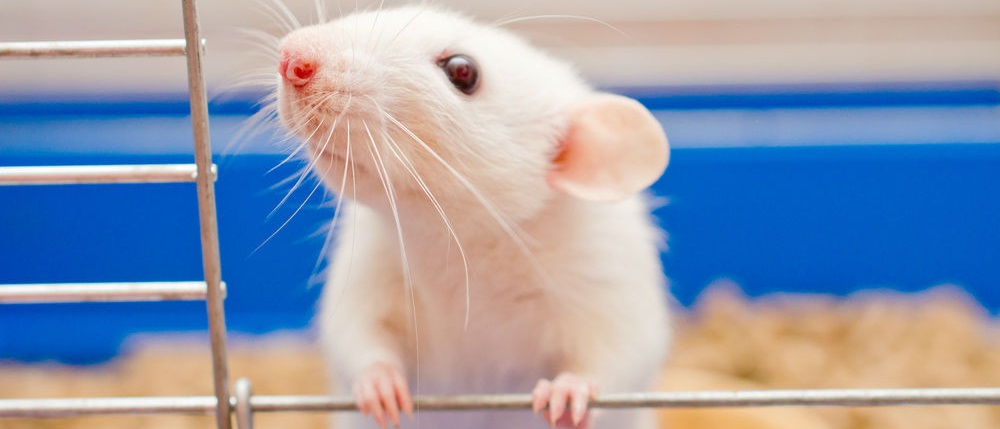
Healthy animals in livestock farming
Wageningen researchers are studying how changes in livestock housing and management can help to ensure that the animals stay healthy and are more able to cope with infections, heat stress and other problems. Taking a blood sample to learn more about the health of an animal is considered an animal experiment. This applies, for example, to analysing corticosteroids in the blood of chickens to gain insight into their stress levels.
In the search for ways to combat climate change, scientists of Wageningen University & Research are studying how the composition of cow manure or the amount of methane cows produce can be influenced by changing their diets. To this end, cows are placed for several days in a so-called respiration room to precisely measure the emissions of methane and other gases. Such research is also classified as an animal experiment.
Example
More resilient pigs
The Adaptation Physiology chair group conducts research into the resilience of pigs. How quickly do the animals recover from heat stress or the stress of transport, for example? And can their resilience be increased by adapting their housing more to their natural needs? Many welfare and behavioural problems in animal farming stem from a mismatch between the adaptability of animals and the conditions under which they are kept. Researchers examine factors that can improve the resilience of pigs, such as their genetic predisposition, what they experience as piglets, and environmental characteristics.
Read more about resilience research
Part of this animal welfare research falls under the Experiments on Animals Act, for example, where animals are administered a substance that makes them feel sick for a day, or if their barn is temporarily heated as part of research into heat stress. Transporting pigs to study transport stress is also classified as an animal experiment, because this causes the animals distress. Behavioural observations and other non-invasive methods do not count as animal experiments under the law.
Alternatives to animal testing are increasingly being used in research. For example, a thermal camera is used to measure the skin temperature of the pigs, and hormone tests can be carried out on saliva. This saliva is collected by having the pigs chew on swabs, which they do naturally out of curiosity. The Adaption Physiology chair group is also developing automated systems such as video monitoring to detect changes in pig behaviour that indicate reduced resilience.
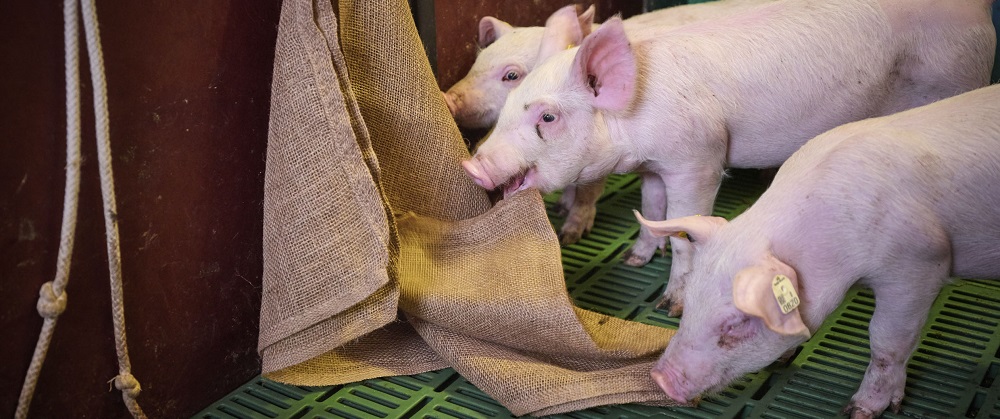
Pets, llamas and wild animals
A small part of the research performed in Wageningen is conducted on pets. For example, the University conducts nutritional research for cats, which are known to be very fussy eaters. Many of the health problems experienced by domestic cats are related to their diet: they get too fat or suffer from kidney or bladder problems or hairballs.
WUR houses its own cats for nutritional research. The cats are housed together in a colony. If they are being used for a test, they are separated from the colony twice a day for an hour and a half so their feed, urine and faeces can be monitored. This allows the researchers to analyse exactly how feed intake and urine and faeces production are related. Separating the cats from the colony causes them distress, so this research is classified as animal testing. When the cats turn nine years old they go into retirement and are adopted by employees of the University.
A very special category of experimental animals at WUR are the llamas kept for fundamental immunological research and the development of new vaccines. The llama has a very special immune system; it has antibodies with much shorter chains than the antibodies of any other animal species. Because of the way they respond, llama antibodies are uniquely suitable for ‘labelling’ with marker substances for the study of immune reactions. To harvest these antibodies, blood has to be taken from the llamas from time to time.
WUR conducts a great deal of ecological research. Sometimes wild animals such as otters, sharks or bats are fitted with a transmitter to monitor their behaviour in the field. If such a transmitter is fitted subcutaneously or attached to the animal, this is classified as an animal experiment and requires a permit. Ringing birds does not count as animal testing.

Statutory tasks
Animal experiments at WUR are often carried out as part of statutory tasks. Wageningen Research conducts these experiments on behalf of the government, mostly to fulfil the obligations of international treaties in the context of public and animal health.
For example, every batch of animal vaccines that is sold on the market must first be tested on laboratory animals. To detect the use of certain painkillers, hormones and other unauthorised substances in livestock farming, samples of animals from suspected farms are regularly compared with samples from untreated animals, which serve as a control group. Obtaining such control samples is classified as an animal experiment.
Tests of healthy animals under controlled conditions are still often the ‘gold standard’ for definitively determining animal diseases, but these animal tests can increasingly be replaced by DNA analyses.
Monitoring fish stocks
Fish make up more than 60 percent of the total number of laboratory animals used at WUR. The research mainly involves monitoring fish stocks in European sea water, which is another example of a statutory task under EU regulations. The fish are caught and killed so that the researchers can obtain information about their age and development from their otoliths. The research results are used to determine fishing quotas for the following year. In order to prevent overfishing, each year the international authorities determine how much each country may catch of each species based on fish stock monitoring. Killing fish caught at sea for consumption does not count as an animal experiment, but if they are caught and killed using similar methods as part of a monitoring programme this is classified as animal testing under the Experiments on Animals Act.
Background
The Experiments on Animals Act and the European directive
The Experiments on Animals Act is the Dutch interpretation of a European directive. Different European countries interpret this directive in different ways. The Dutch interpretation is in some ways a bit stricter than the European directive. The European directive states that research involving animals is classified as an animal experiment if the animal experiences more or just as much distress as when an injection is administered by a competent person. If animals are killed using recognised humane methods and without any other prior testing, the European directive does not require a permit for the use of samples of these animals in experiments, but in the Netherlands, killing an animal for the purpose of research (for example for monitoring fish stocks), is regarded as an animal experiment.
Replacing, reducing and refining animal experiments
Wageningen University & Research is working in various ways to replace, reduce and refine animal experiments (the 3Rs). Some of the research carried out today can be done using alternative methods, for example through the use of tissue culture or computer models, and sometimes these methods are even better and cheaper (replace). When an alternative is not available and animal testing is necessary or even required by law, we carry out the experiments using as few animals as possible (reduce). Furthermore, we are constantly trying to reduce distress for the animals and make their lives as pleasant as possible (refine).
In search for alternatives
WUR is actively developing a wide range of alternatives to animal testing. For example for some time now, we have been working on non-animal alternatives to the tests used to determine the presence of pathogens in groups of animals or hormone levels in the blood (bioassays). New, more sensitive laboratory techniques and DNA tests may ultimately provide more reliable results than traditional bioassays in which animals are infected or otherwise administered a substance so that their reactions can be examined. We are also developing tissue cultures, miniature organs (organoids) and self-learning computer models based on big data.
The search for alternatives to animal testing is not only driven by the personal motivations of the researchers, but also by the high costs of research involving experimental animals and the strict requirements. A research question that might be very interesting from a purely scientific point of view may be considered unacceptable on moral and ethical grounds. The independent committee that assesses all animal experiments carefully considers whether the importance of the research outweighs the degree of distress it will cause the laboratory animals. If this is not the case, the researcher will not be granted a permit for the animal experiment.
Researchers have to go through an extensive and time-consuming procedure before they can carry out an animal test, and the testing itself is an intensive and costly process. For example, the law imposes strict requirements on facilities for experimental animals. And employees must be specially trained for the work and regularly follow refresher training courses. These are additional reasons to limit the number of animal experiments as much as possible.
Example
New quick botulism test saves mouse lives
Every summer, when it’s hot outside, people are warned about the danger of botulism in bathing water. Botulism is a serious disease caused by the neurotoxins produced by a bacterium, Clostridium botulinum. There are different types of toxins, referred to as types A-H. Sensitivity to these types varies from species to species.
Read more about the botulism test
“The poison blocks the transfer of stimuli from the nerves to the muscles,” says veterinary microbiologist Miriam Koene of Wageningen Bioveterinary Research. “This can cause life-threatening paralysis in both animals and humans.” Fish and water birds can die from botulism. It can also affect horses, poultry and cattle, often in the form of outbreaks involving large numbers of animals. Occasionally, people get infected too. Usually from eating contaminated food – often home-made preserves – and babies can get it from honey.
Wageningen Bioveterinary Research is the national reference centre for botulism. In the past, botulism was identified by infecting mice with a sample of the material. Miriam Koene and her colleagues developed a number of DNA tests (PCR) to detect the pathogen directly without the need for intermediate tests on laboratory animals.
“Botulinum is the most powerful natural poison on earth; much stronger than snake venom,” says Koene. “One billionth of a gram can be enough, which is why the test has to be extremely sensitive. Unluckily for mice, they are very sensitive to all the different types of this poison. This is why tests on mice are still the international standard, even though researchers around the world have been searching for alternatives for decades.”
The PCR tests introduced by Koene recognises toxin genes in the bacterial DNA sample. These tests do not identify the toxins themselves, but are used for pre-screening. This can be sufficient for a quick diagnosis in situations where indications of botulism already exist, for example when paralysed waterfowl are found during warm weather.”
“Using PCR tests, it has been possible to reduce the number of mice used for botulism diagnostic tests by more than 90%,” says Koene. “However, tests on mice are still required to definitively identify the botulinum toxins themselves, which is done in case of suspicions of botulism in humans, for example.”
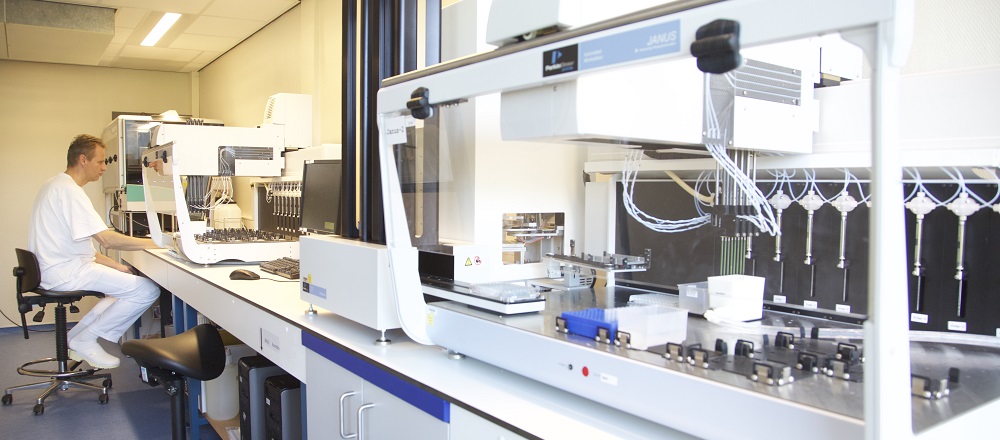
Education
The use of laboratory animals for educational purposes at WUR has been greatly reduced in past years. Body parts are obtained from slaughterhouses when possible. The University now keeps a stock of frozen piglet cadavers that were stillborn or died shortly after birth for anatomy practicals that require mammal body parts. For a practical in which nutrition students have to analyse how sugar is absorbed into the intestine and how this can be influenced, only one rat is used between 16 students. Students of laboratory animal science have to learn how to suture, but today they practice on inner tubes of bicycles.
However, gaining experience with real animals remains indispensable for animal science students. It is also important that students are given the opportunity to find out if they want to work directly with animals and, if so, to gain the needed skills for this during their education. This requires them to have contact with animals and conduct animal tests.
Field studies
New technologies are also emerging as alternatives to animal testing in field studies. For example, modern DNA technology makes it possible to collect a great deal of information about wild animals without killing them – or even having to capture and stun them to take blood samples – because DNA analyses of the animals’ faeces are such a rich source of information. And in this way, researchers of Wageningen University & Research know a lot about the wolves that live in the Veluwe without ever having seen them.
Pre-screening without laboratory animals
Alternative methods are also being systematically developed for toxicity tests, hormone analyses and other tests, and the use of laboratory animals for toxicological studies is being reduced. For example, batches are first pretested (pre-screened) using tissue culture tests, and only if there are suspect levels they are tested on laboratory animals.
Example
Harmful substances in our food
How can we measure if there are harmful substances in our food? Researchers of Wageningen Food Safety Research conduct much toxicological research into harmful substances in food. How easily are they absorbed and how long do they stay in our bodies? The researchers are also investigating to what extent harmful substances can end up on our plates via animal products such as milk, meat and eggs.
Read more about measuring harmful substances in food
“We used to do a lot of food safety experiments with rodents such as rats and mice,” says Lonneke van der Geest, business unit manager at Wageningen Food Safety Research. “We would expose the animals to toxic substances and then examine them for physiological abnormalities and other disorders, and translate the outcome to humans. Today we conduct that research as much as possible using in vitro cultured human cells. You cannot make a copy of a whole mouse or rat, let alone a human in a Petri dish, but you can study a variety of separate phenomena fairly well in vitro, after which you can try to piece together the complete picture.”
An important aspect of food safety is the risk of absorption by the intestine and from there into the blood. For this purpose, intestinal cells are studied. How do substances pass through the intestine? Are they absorbed by the blood? Liver cells are also meticulously studied to learn how substances in the liver are converted and broken down and which intermediate substances are produced, and researchers also want to know what the possible toxic effects of substances are on liver, kidney and brain cells, for example.
“Our research mainly focusses on developing alternative toxicity tests to reduce the use of laboratory animals,” says Lonneke van der Geest. “Often, these alternative tests are also more reliable. After all, our liver is not identical to a mouse liver. You see the same thing in drug research: sometimes a human can develop all kinds of side effects that a mouse does not. Conversely, human cells contain all kinds of enzymes to break down substances that a mouse cell does not.”
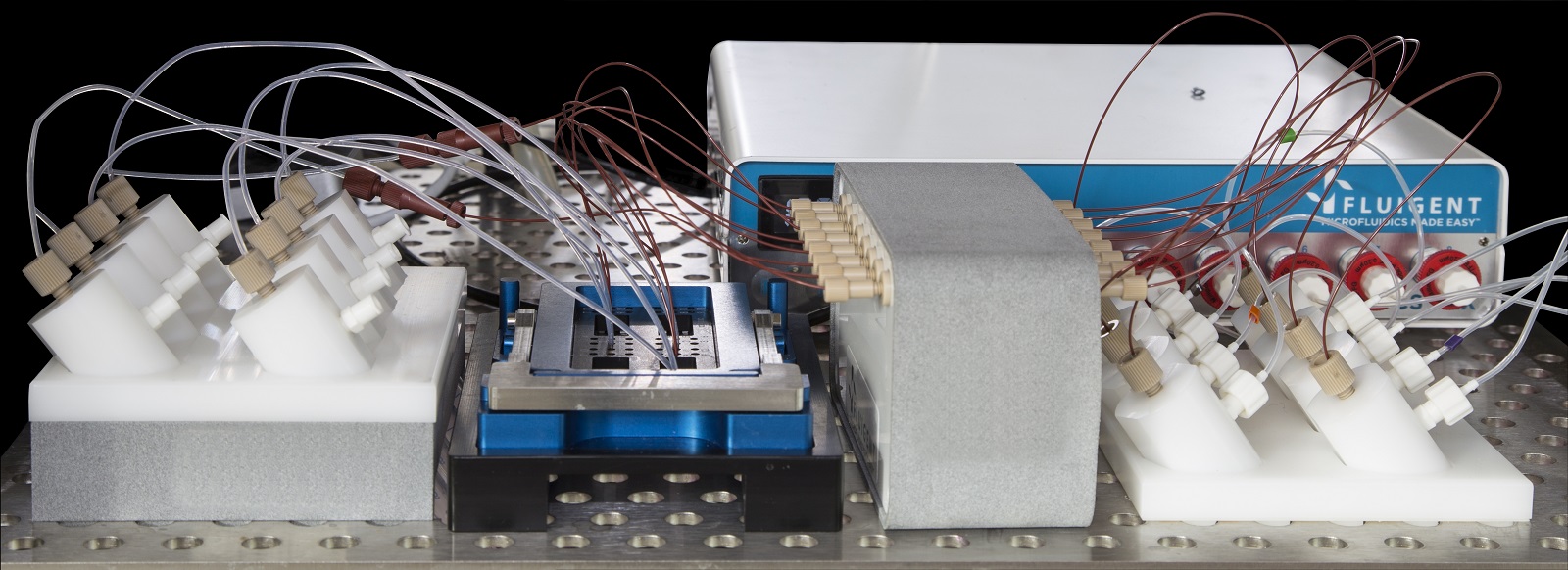
Organoids as an alternative
Animal experiments have been increasingly replaced by experiments using tissue cultures, and now also by organoids. These are miniature organs grown from a tissue sample in which all kinds of living cells function in a network. This is already being done with muscle, intestine and liver tissue.
All kinds of experiments can be carried out on these organoids. For example, to test a medicine for pigs, instead of using a live animal, all you have to do is infect a piece of a pig’s organ in the lab. Human nutrition researchers use organoids to test all kinds of ingredients and nutrients. This pre-screening allows them to test without laboratory animals, in order to select the most promising options.
To make organoids, however, tissue from animals (or people) is needed. Taking a tissue sample (a biopsy) from a live or dead animal is considered an animal experiment in the Netherlands, but one such sample can be used to conduct a lot of tests. Moreover, taking a biopsy is usually less stressful for the animal than being used in an experiment.
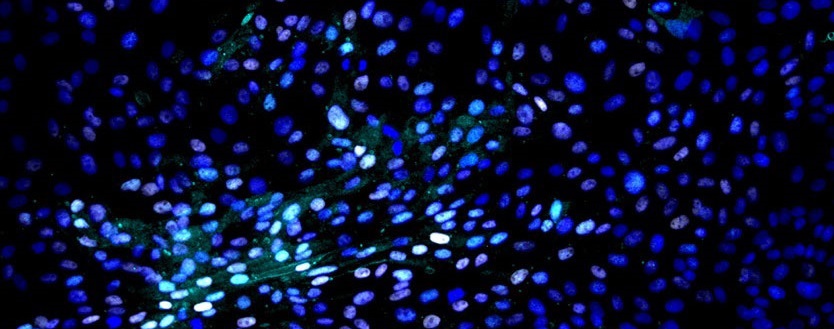
Reduce and refine
In practice, it proves to be easier to replace animal experiments rather than reducing or refining them. An experiment must always be sufficiently substantial to produce reliable and statistically significant results, and editing boards of some scientific journals prefer the use of standard experimental designs and impose additional requirements if researchers deviate from them. WUR therefore uses statistical models to analyse the relationship between the experimental design and the reliability of the results.
When social animals such as chickens are involved in experiments, enough animals must be kept in each pen to allow for normal social animal behaviour, but at the same time the number of animals in the pen must be kept as low as possible to reduce the total number of animals used in experiments.
Refining animal testing includes providing optimal housing conditions with plenty of material that provides distraction for the animals. It is also important to design the experiments in such a way that social animals are not isolated, but can always have contact with others of their species. Refining also involves ensuring that the animals can become acquainted with their handlers and the specific activities that are required of them. For example, cats are trained to give blood and are given a cat treat as a reward.
These forms of refining are often relatively expensive because of the costs of adapting the housings and the extra time required. WUR has earmarked extra funds to ensure that refining of animal experiments can continue, and some of these investments will eventually pay for themselves in net terms. For example, more and more tests such as heart rate and body temperature measurements can be carried out remotely, and this telemetry testing is a form of refining that ultimately requires less staff.
